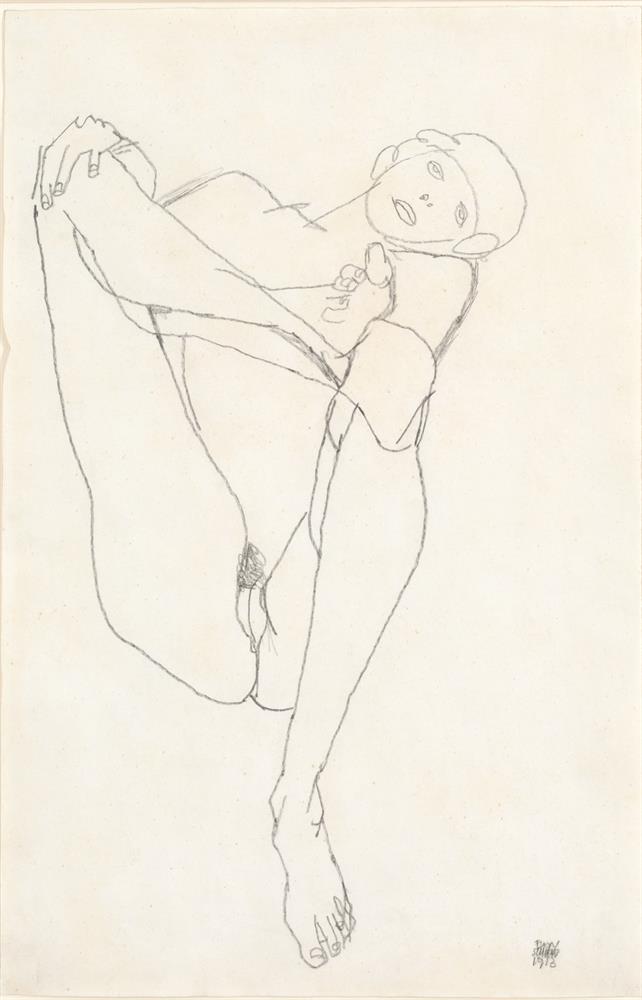
Tulln 1890 - 1918 Vienna
Seated Female Nude
Pencil on paper
44.8 x 28.9 cm
Signed and dated lower right: EGON / SCHIELE / 1913
Stamp of the estate on the reverse
Inscribed upper left on the reverse: 15000 22.2.61 Dr. Benesch
Inscribed lower left on the reverse: Maria Schiele
Kallir WV no. 1303
Provenienz:
Estate of the artist
thence by descent to Marie Schiele, Vienna
Dr. Otto Benesch, Vienna, by 22 February 1961
Sale, Dom-Galerie, Vienna, 19 March 1973, sale 1, lot 544
Sale, Galerie Wolfgang Ketterer, Munich, 28 November 1976, Sale 19,
lot 1705
Private collection, Germany
Sale, Christie’s, London, 3 April 1990, lot 152
William Davis Fine Arts, New York
Private collection
Sale, Sotheby’s, New York, 6 May 2004, lot 318
acquired at the above sale by the present owner
Ausstellungen:
Vienna, Galerie 10, ‘Von Schiele bis Leherb’, around 1970
New York, Gagosian Gallery, ‘Egon Schiele, Nudes’, 1994
Literatur:
Jane Kallir, Egon Schiele: The Complete Works. Expanded edition, New York 1998, ill. p. 500, no. 1303
Influenced early on by Gustav Klimt and Jugendstil design, Schiele would continue throughout his career to play off two- and three-dimensional elements in his drawings. The balancing of positive and negative space and the positioning of the figure on the sheet were central to his compositional method. There was always an uneasy tension between the three-dimensional human form and the flatness of the picture plane. Drapery and clothing often mediated between the two.
After the Expressionistic turbulence of 1910-12, Schiele’s development in 1913 was relatively smooth. Nonetheless, the year saw one of the most profound and lasting stylistic shifts of his career. For the first time, three-dimensional considerations began to overshadow two-dimensional ones.
Though uncolored, Seated Female Nude manages to convey a sense of volume through line alone. The bulges of the woman’s thighs and calves hint at an underlying structure of muscle and bone, while the foreshortening of the neck and head positions the figure in space. These concessions to realistic verisimilitude, however, are belied by the surrounding void and the self-conscious interplay between the figure and the edges of the sheet. The precisely balanced location of the signature vis-a-vis the rest of the drawing further underscores the composition’s two-dimensional orientation.
Compared to drawings from earlier periods, Schiele’s 1913 nudes have a closer relationship to the artist’s contemporaneous oil paintings. He was now more interested in the female figure as an emblematic "every-woman," whose form could be adapted to populate sweeping allegorical visions. To that end, he focused on perfecting a series of generic poses: standing, squatting, reclining and so on. Though Seated Female Nude does not relate directly to any of Schiele’s paintings, the stylized face typifies his more impersonal approach to the model.
Jane Kallir
